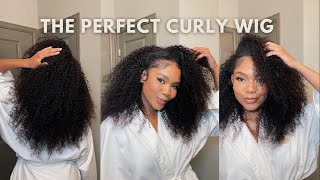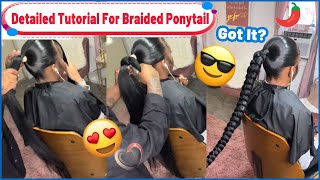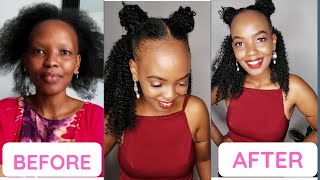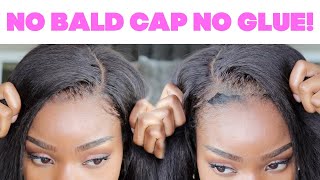Wigs, Extensions & Weaves: A Cosmetologist’s Guide
- Posted on 04 January, 2019
- Hot Topic
- By A. Rothstein
If you are on social media or searching through hair magazines for hair inspiration, cosmetology may be right for you. Hair is all about experimenting, creative expression and finding the artist in you. With Instagram, Facebook and other social platforms you can follow celebrity hairstylists, celebrities, or influencers. If this sounds like you, then you may enjoy seeing how weaves, wigs, and extensions can help your hair goals.
Hair alternatives, like weaves, wigs and extensions make it easy to experiment on hair. Taking a trip to the beauty salon could mean leaving with Beyoncé’s long, sleek luxurious look, sacrificing a couple of hours of time.
Cosmetology will teach you all the fascinating ways to work with wigs, install weaves and create styles that protect natural hair without the use of chemicals like perms, dyes, glue and heat. There are also more options available, for someone who wants to try a certain look without a long-term commitment.
The Many Types of Weaves
There are many different types of hair weaves. Extensions, Lace front or lace closure wig or weave are the most popular options. Then there are sew- ins. Sew-in weaves offer options like a flip over, where it gives you two sets of partings and then you have a c-parting. This creates curved parts.
What Are the Different Processes for Each Type?
The process of getting a wig or weave uses bundles of hair and a lace to create the wig or weave for the client. Braiding the client’s hair allows a flat base. Bundles connect to the base using a special stitching method with hair thread.
PartialCoverage
With partials the hairstylist will braid most of the hair, except for a small section at the top of head. This allows the hairstylist to cover the weave tracks and create a parting. The hairstylist will then sew down 2-4 bundles on the base. These give the partial weave a natural look and using the client’s own hairline. This type of style requires maintenance of the client’s natural hair or breakage will occur.
CombOvers (Vixen)
The hairstylist applies weaves with tracks to different sections of the hair instead of braiding the hair back or into a pattern resembling a beehive. Hair stays out around the edges, and down the middle of the head, allowing more versatility when styling the client’s hair. This style makes buns, ponytails and French braids easy to create. The vixen is ideal when the natural hair is long and healthy.
FullHead Coverage
Wigs require a spandex cap to ensure comfort and removal. Certain lace system applications need a temporary hold gel to set the lace front. They can be a lace closure or a full-lace frontal.
Lace frontals are best when used to recreate a new hairline. This is good if the client suffers from thinning edges or any kind of hair loss at the top of their head. Frontals are a protective style where none of the hair shows. This allows options for pulled-back hairstyles.
Extensions
There are many different types of extensions and they are applied in many different ways. The different extensions include clip-ins, micro links, glue-on, and double sided tape extensions.
Clip-In Extensions
A temporary method that does not damage the natural hair. Large pieces of tracks clip in the client’s hair.
Micro Link Extensions
Hair loops around natural hair and requires a hot gun and metal rings to attach. Extensions last for months at a time and are a permanent bond. Individual pieces contain more hair, which makes them heavier for clients. Due to the weight, extensions are not recommended for people with thin hair. You should use less of the extensions on people with normal density hair, so the weight balances throughout the entire head.
Glue-On Extensions
This type of extension requires glue for installation on the client’s hair.
Double Sided Tape/Tape-In Extensions
One piece of tape is above the hair in the middle, and one piece of tape is below the hair. Double-sided tape lasts 6-8 weeks. During the consult, the hairstylist should give an idea of how many pieces the look will take, as well as where they will place their extensions for a natural look.
How Long Does it Take for A Wig, Extension or Weave Install?
The time varies based on three factors: the stylist doing the hair, the texture of the natural hair and the style preferred by the client. Wigs, extensions and weaves usually take 2-4 hours to complete.
How Long Do Extensions or Weaves Last?
Keeping the client’s extension or weave in depends on the client’s hair, skin type, and hair texture. The wig or weave must be of good quality, so synthetic hair is not recommended. Weaves have a shorter life compared to wigs, usually lasting 3-4 weeks. Wigs can last anywhere between three weeks to several years. Extensions depend on the type the client chooses to use, but should never stay in the hair over four months at a time or over two inches of hair growth.
Do Weaves Hurt?
Braiding the natural hair may result in a little tension depending on the person doing the braiding. The process of the installation should not involve any pain.
Hairpiece Upkeep and Maintenance
There are many maintenance products available. Hairstylists should consider the texture of the hair that the client has chosen to use. Curly hairstyles need a curling mousse to help keep the curls neat. For straight hair, use heat protecting spray. For a silky straight or body waves, recommend a good holding spray after curling or straightening. Hair extension routines should consist of placing the hair in a low pony at night and dry completely at the roots when wet. This can prevent major damage to the hair, preventing matting and help the hair last longer.
How Often Should I Shampoo My Hair?
This is up to the person wearing the weave or extensions. The client will want to consider how many days a week they will wear the hair. What type of activity will be taking place while wearing the hair? If the client intends on daily wear, the weave may need a bi-weekly shampoo. Shampoo weaves less often to avoid the natural hair braid from loosening. The client should care for weave or extension the same as they would natural hair.
Can I Dye and Style Weaves?
Yes, any color dye is safe for human hair weaves. You can flat iron, curl, style, or leave the hair out to air-dry it. Invisible tape pieces are available in sets of 30 shades, so instead of dyeing to match, stylists match the shade to the last five inches of the natural hair.
Can You Take Out Your Own Weave?
Clients can remove their own extensions at home, but it is best to see a trained hair professional to prevent natural hair damage. When installing a weave, thread the hair for security. Follow the thread and cut, it will then unravel. It usually only takes about one hour depending on the person taking it out.
Is False Hair Bad for Your Natural Hair?
Don’t use temporary ways of adding hair every day, as they attach large pieces to a small part of the head. Use them sparingly so there is not long-term damage to the natural hair.
Permanent bonded hair pieces or spandex cap pieces last an entire lifetime and will not cause damage if the client uses the correct maintenance. Check and fit the pieces once they start to grow out to keep them from pulling on the natural hair.




